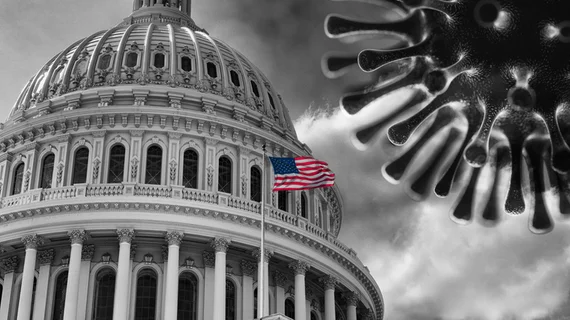American College of Radiology urges Congress to address ‘worsening’ physician shortages
The American College of Radiology is urging Congress to address “worsening” physician shortages in the U.S.
ACR recently voiced its concerns in comments submitted to the House Committee on Ways and Means, which is exploring how to improve access in rural and underserved areas. The college pointed to a report from the Association of American Medical Colleges, estimating that the country could see a shortfall of “other specialties” (including radiology) as high as 35,600 by 2034.
“Physicians are a vital component of our nation’s healthcare infrastructure and we have seen firsthand the worsening shortage of healthcare providers surrounding the impact of the COVID-19 pandemic,” ACR Executive VP Cynthia R. Moran said in comments submitted to Ways & Means leaders on Oct. 4. “A large portion of the physician workforce is also nearing traditional retirement age, which will soon contribute to the magnitude of national workforce shortages.”
Specific to radiology, Moran noted that, of the nearly 21,000 radiologists engaged in active patient care, 53% are age 55 or older. Radiology also ranks fifth out of 23 surveyed specialties in reported rates of burnout. Further complicating the situation, radiology also is facing shortages of technologists and other support personnel.
“With concerns about physician shortages, looming new shortages and the threat of burnout leading to more physicians leaving the workforce, investments to increase the number of physicians [are] sorely needed,” she added.
The Consolidated Appropriations Act of 2021 added 1,000 new Graduate Medical Education slots—the first such increase in a quarter century. But advocates believe further action is needed in response to the growing physician deficit and aging population.
Moran highlighted two recent policy proposals that could address this issue, urging the 118th Congress to pass them. Those include the Resident Physician Shortage Reduction Act, which would add 14,000 Medicare-support medical residency positions over a seven-year period. The bipartisan Specialty Physicians Advancing Rural Care Act also could further address shortages by creating a student loan repayment program for specialists practicing in such communities.
“Addressing the healthcare workforce challenges that we face requires educating and training enough physicians to meet the country’s needs,” Moran wrote. “A long-term investment is needed by Congress. ACR is committed to working with lawmakers and optimizing the radiology workforce as we explore legislative solutions to bring vital and innovative medical care to patients.”
You can find the full comments, which touch on several other topics, here and an Oct. 12 news summary from ACR here.

